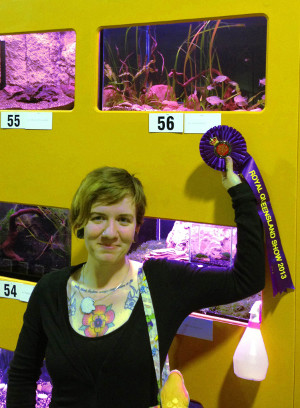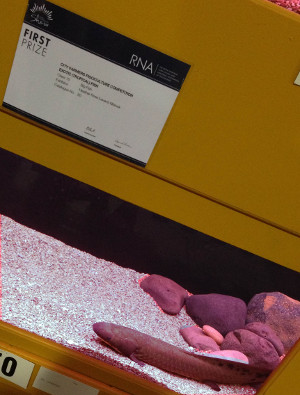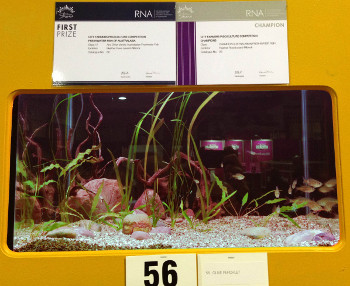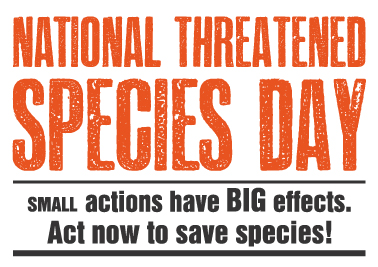
Events Friday September 6, 2013 (please note the actual day is September 7)
National Threatened Species Day first occurred in 2007 after Frank Manthey, Co-Founder, Save the Bilby Fund and Al Mucci, Director of Dreamworld embarked on a vision: to collectively harness the zoo and aquaria industry to draw attention to the plight of our national threatened species.
 National Threatened Species Day has since run with great success in Queensland. This year, the event has expanded to a number of other states in Australia.
National Threatened Species Day has since run with great success in Queensland. This year, the event has expanded to a number of other states in Australia.
Free community events are being held across New South Wales, Queensland, and Northern Territory.
ANGFA Qld has produced a Threatened Fish Colouring Book as part of the event this year.
WHO: ANGFA Qld is joining with zoos and aquariums across Australia for this National Threatened Species Day in partnership with the Save the Bilby Fund. Featuring celebrity ambassadors, Frank Manthey ‘The Bilby Man’ and Ranger Stacey.
WHAT: Over 30 zoos and aquariums, under the banner of the Zoo and Aquarium Association will bring a range of iconic, quirky, creepy and slithery threatened species into city locations across the nation. This FREE event will inspire and educate local communities about the plight of threatened species.
Have your photo taken with a Tassie Devil, cuddle a koala, pat a Dingo pup etc!
Experience a close encounter with a variety of live threatened species.

WHEN: 8am – 2pm, with 10 – 15 minute interactive and fun presentations by keepers with their animals.
WHERE: Friday Sept 6 - Sydney (Martin Place) and Brisbane (Queen Street Mall, CBD); Sunday September 1 - Cairns (Carnival on Collins); and Saturday September 7 Darwin (Waterfront)
WHY: The Zoo and Aquarium Association connects zoos and aquariums throughout Australasia in a network for conservation. We will inspire local communities to find out what is threatening many of our species, and educate them on what we can all do in our daily lives to help save them.
The Zoo and Aquarium Association connects 90 member zoos and aquariums in a network for conservation. Together, with the Australian Government, and other conservation organisations such as the Save the Bilby Fund we are working to protect and conserve these threatened species through species management programs, and education.

The collective vision of the Zoo and Aquarium Association members is to harness the membership for conservation. Together our aim is to prevent the extinction of species.
Why 7th September?
The date for National Threatened Species Day, (7th September) commemorates the last day that the Tasmanian Tiger was alive in 1936. Now, 76 years later, Australia is still facing the extinction of many threatened species including Australia’s very own Bilby and Tasmanian Devil.
The Value of Australian Zoos and Aquariums
- Zoos and aquariums are the second most popular cultural activity in Australia with over 15 million visitors annually, second only to the cinema;
- they contribute to the education of over 600,000 students per annum;
- they rescue and rehabilitate on average over 14,000 Australian animals each year; and
- they care for 370 species on the International Union Conservation for Conservation of Nature (IUCN) red list of endangered species.
What are zoos doing for our threatened species?
Currently, zoos and aquariums are working with government in every state and territory in Australia to participate in recovery efforts for some of the country’s most endangered wildlife. For example, zoos are the only viable solution to saving the Tasmanian Devil through the Insurance Population, a captive breeding program in partnership with the Tasmanian Government.
Zoo and Aquarium Association
- Zoo and Aquarium Association is the peak body for zoos and aquariums with over 70 member zoos in Australasia.
- The Association has coordinated National Threatened Species Day.
- The Association currently run more than 100 managed programs for rare and threatened species.
Extinctions are a natural part of evolution however there is no excuse for man-made extinctions. We must all act together to prevent the extinction of any more of our wonderful and amazing species.
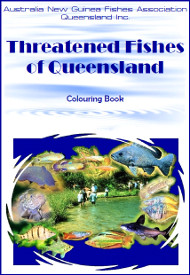 In recognition of National Threatened Species Day 2013, ANGFA Qld have produced a colouring in book depicting some of Queensland's threatened freshwater fish - for free download. With original art from Rose Levanti-Niblock, photos from Gunther Schmida, and editing by Adrian Tappin the book includes a colouring-in section and a section with some facts and photos about the featured fish that will help teachers and parents provide more information for enquiring minds.
In recognition of National Threatened Species Day 2013, ANGFA Qld have produced a colouring in book depicting some of Queensland's threatened freshwater fish - for free download. With original art from Rose Levanti-Niblock, photos from Gunther Schmida, and editing by Adrian Tappin the book includes a colouring-in section and a section with some facts and photos about the featured fish that will help teachers and parents provide more information for enquiring minds.


 National Threatened Species Day has since run with great success in Queensland. This year, the event has expanded to a number of other states in Australia.
National Threatened Species Day has since run with great success in Queensland. This year, the event has expanded to a number of other states in Australia.



